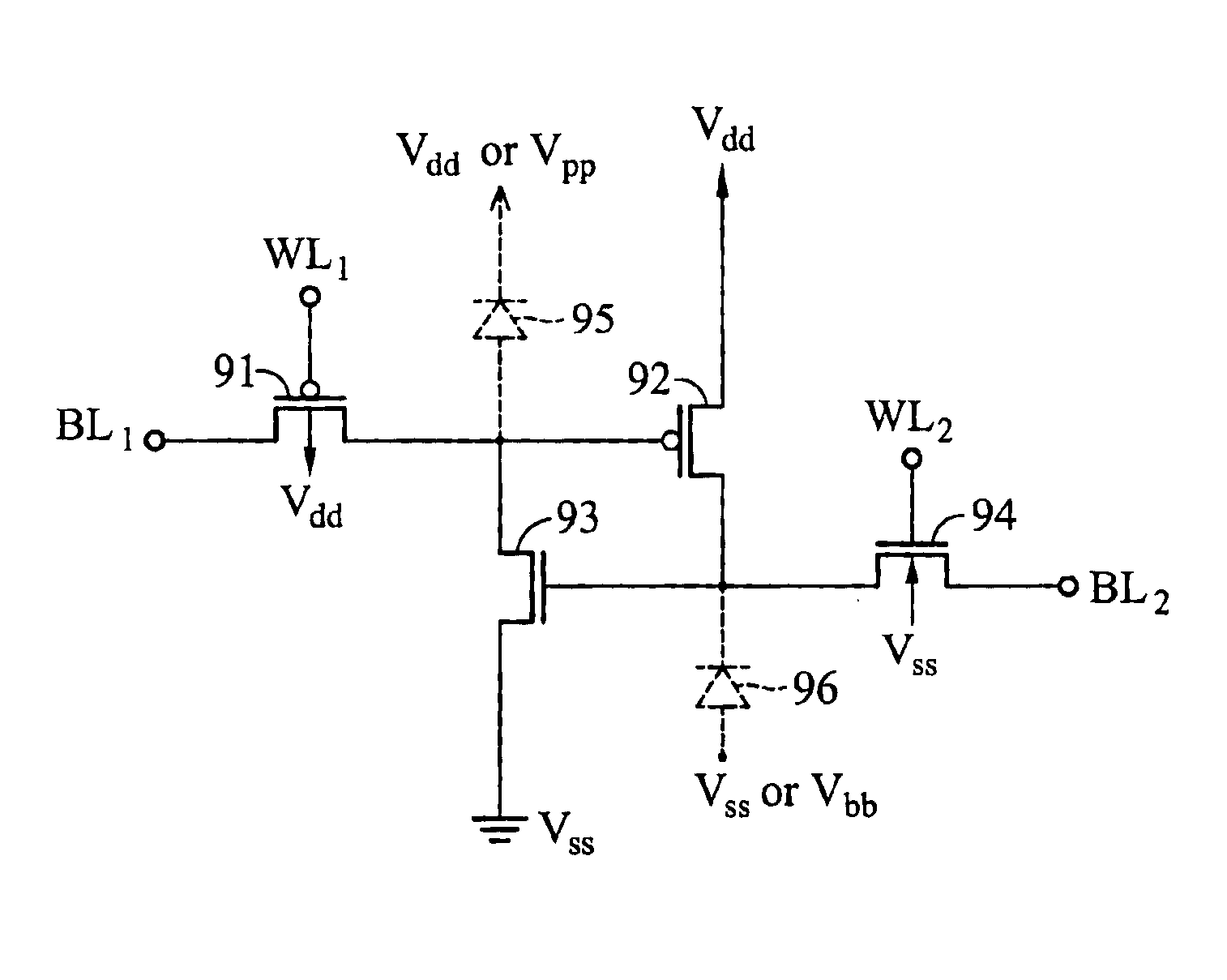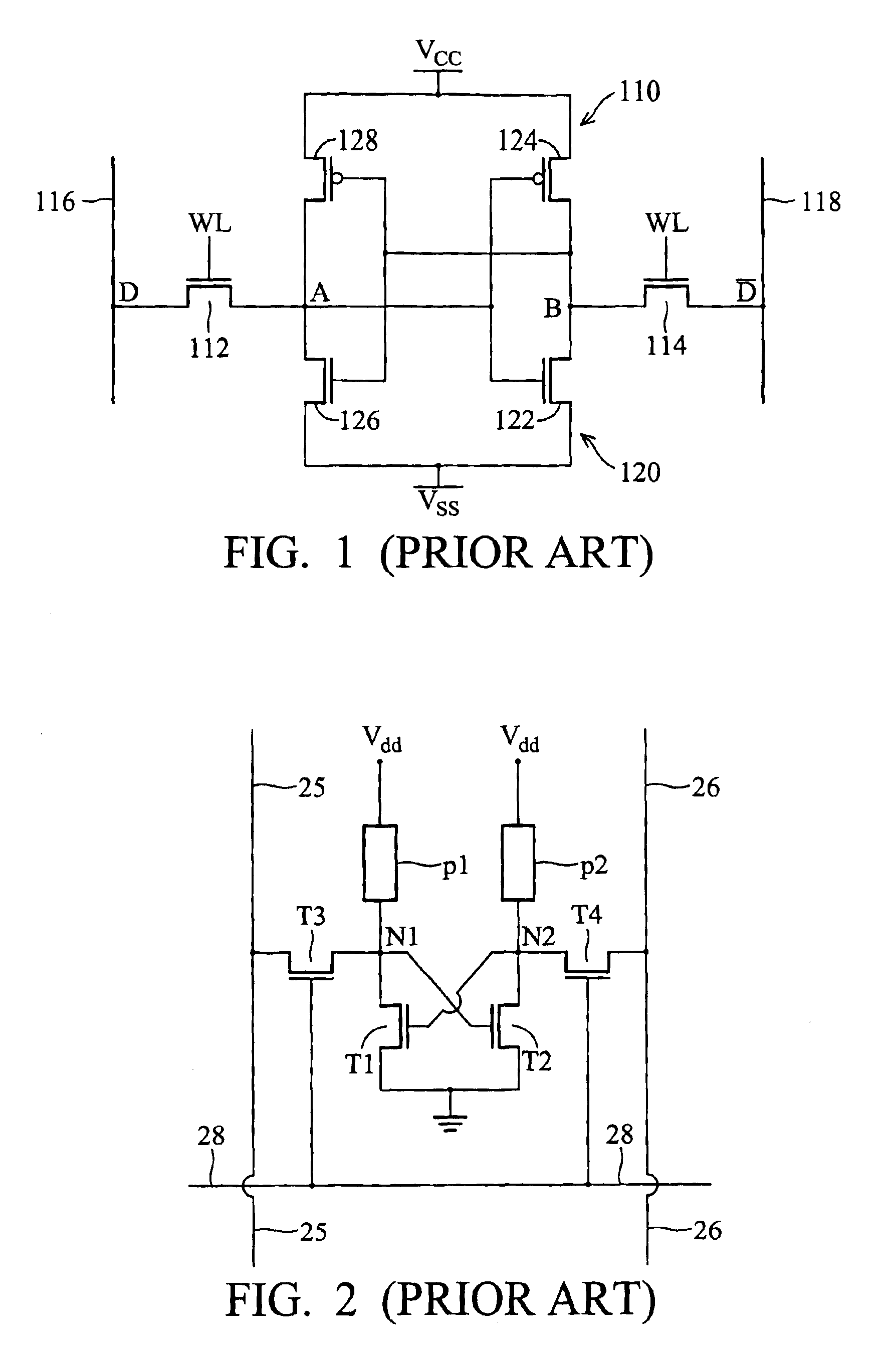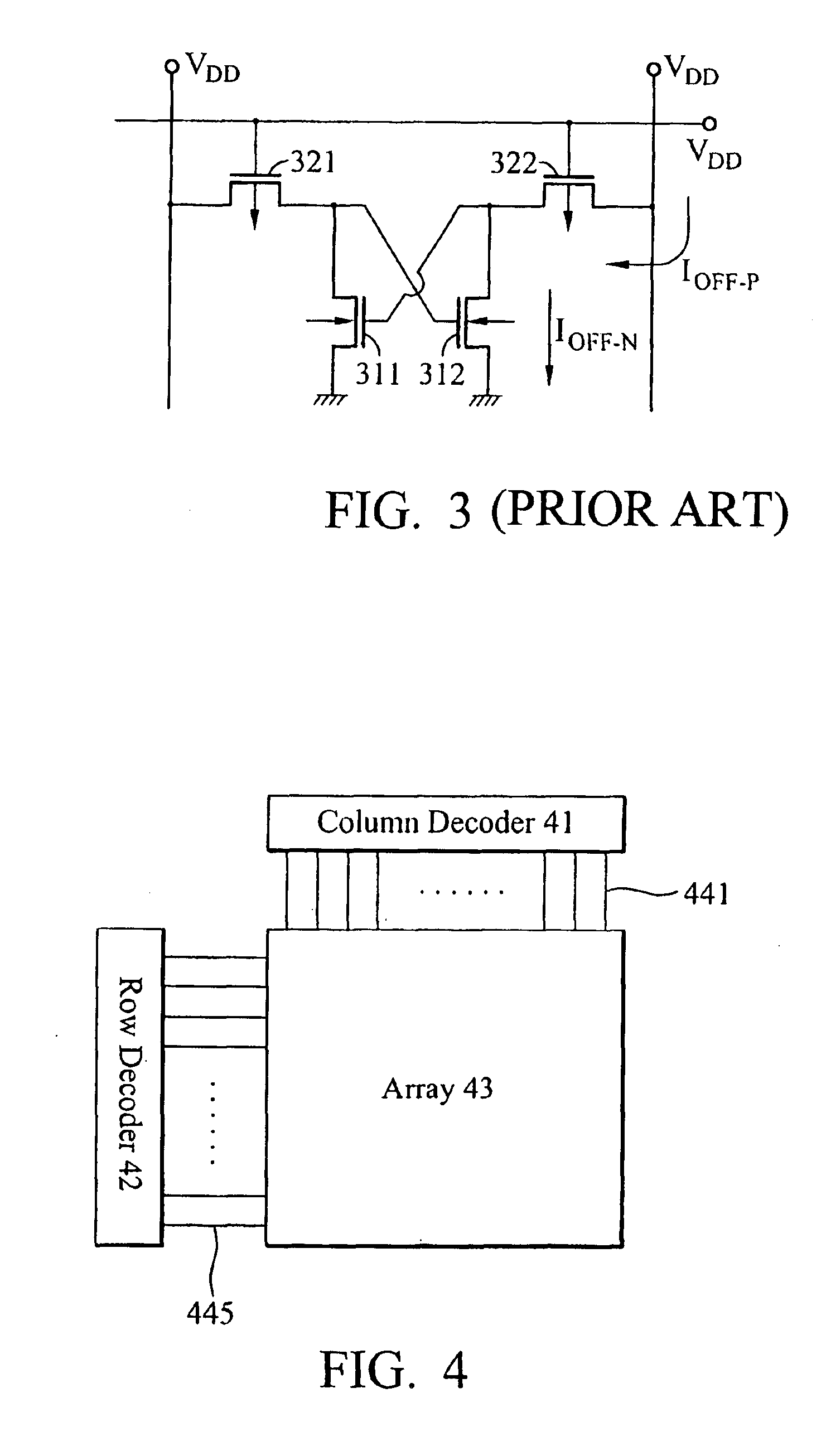Non-refresh four-transistor memory cell
a memory cell and non-refreshing technology, applied in the field of memory cells, can solve the problems of data signal inability to be stably sustained, poor stability of 4t-srams at low voltage, etc., and achieve the effect of large sensing margin and small cell siz
- Summary
- Abstract
- Description
- Claims
- Application Information
AI Technical Summary
Benefits of technology
Problems solved by technology
Method used
Image
Examples
Embodiment Construction
Disclosed herein are novel systems and methods for non-refresh four-transistor memory cells. To facilitate description of the inventive system, an example system that can be used to implement non-refresh four-transistor memory cells is discussed with reference to the Figures. Although this system is described in detail, it will be appreciated that this system is provided for purposes of illustration only and that various modifications are feasible without departing from the inventive concept. After the example system has been described, an example of operation of the system will be provided to explain the manner in which the system can be used to provide non-refresh four-transistor memory cells.
Referring now in more detail to the drawings, FIG. 4 is a block diagram showing a memory device according to a preferred embodiment of the invention. A memory device includes an array 43 composed of rows and columns of memory cells, a column decoder 41 coupled to the memory cells in the array...
PUM
 Login to View More
Login to View More Abstract
Description
Claims
Application Information
 Login to View More
Login to View More - R&D
- Intellectual Property
- Life Sciences
- Materials
- Tech Scout
- Unparalleled Data Quality
- Higher Quality Content
- 60% Fewer Hallucinations
Browse by: Latest US Patents, China's latest patents, Technical Efficacy Thesaurus, Application Domain, Technology Topic, Popular Technical Reports.
© 2025 PatSnap. All rights reserved.Legal|Privacy policy|Modern Slavery Act Transparency Statement|Sitemap|About US| Contact US: help@patsnap.com



